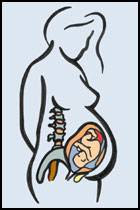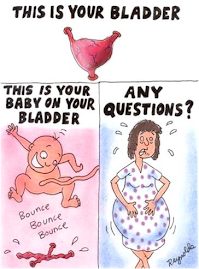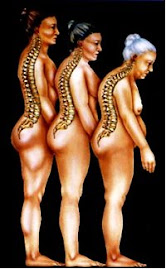If you're a woman who sometimes experiences pain on one side of your lower abdomen and you don't know what it is, keep track of its timing by observing and recording several menstrual cycles. If it occurs midway through your menstrual cycle — about 14 days before your next menstrual period — you're most likely experiencing a condition called mittelschmerz. A German word that means "middle pain," mittelschmerz is pain with ovulation.
In most cases, mittelschmerz doesn't require medical attention. For minor mittelschmerz discomfort, over-the-counter pain relievers and home remedies are often effective. If your mittelschmerz pain is troublesome, your doctor may prescribe an oral contraceptive.
The main symptom of mittelschmerz is a distinctive, one-sided lower abdominal pain or discomfort. The pain may switch sides every other month or every other time you feel it. It's also possible to feel it on the same side for several months in a row. The pain occurs on the side in which you're ovulating.
The pain usually lasts a few minutes to a few hours, but it may continue for as long as a day or two. Pain from mittelschmerz may be:
- A dull ache that feels like a cramp
- Sharp, sudden pain
- Accompanied by mild vaginal bleeding or discharge
- Rarely, severe
The location and the timing of your pain can help you identify mittelschmerz, especially if you have a history of it. Keep track of your menstrual cycle for several months and note when you experience this pain. If it occurs midcycle and goes away without treatment, it's most likely mittelschmerz.
When to see a doctor
In the vast majority of cases, mittelschmerz requires no medical intervention. However, contact your doctor if a new pelvic pain becomes severe, if it's accompanied by nausea or fever, or if it persists — any of which could indicate you have a condition more serious than mittelschmerz, such as appendicitis, pelvic inflammatory disease or even an ectopic pregnancy.
During your menstrual cycle, the female sex hormone estrogen causes your uterine lining (endometrium) to thicken every month to create a nourishing environment for a fertilized egg. Soon afterward, a follicle — a tiny sac in your ovary that contains a single egg (ovum) — ruptures and releases its egg (ovulation).
If the egg becomes fertilized by contact with a sperm on its way to your uterus, the egg implants in the lining of the uterus. However, most often the unfertilized egg passes through your uterus and out of your body. Shortly thereafter, your uterus releases this lining and your menstrual flow begins.
Mittelschmerz occurs during ovulation, when the follicle ruptures and releases its egg. It's estimated that 1 in 5 women experience ovulation discomfort. Some have mittelschmerz every month, while others have it only occasionally.
While the exact cause of mittelschmerz is unknown, here are possible reasons you may feel pain:
- Just before an egg is released with ovulation, follicle growth stretches the surface of your ovary, causing pain.
- Blood or fluid released from the ruptured follicle irritates the lining of your abdomen (peritoneum), leading to pain.
Pain at any other point in your menstrual cycle isn't mittelschmerz. It may be normal menstrual cramping (dysmenorrhea) if it occurs during your period, or it may be from other abdominal or pelvic problems. If your pain is severe during the time of ovulation or at any other time during your cycle, see your doctor.
If you need relief from the discomfort of mittelschmerz, try an over-the-counter pain reliever, such as acetaminophen (Tylenol, others), aspirin, ibuprofen (Advil, Motrin, others) or naproxen (Aleve).
If you experience mittelschmerz nearly every month and it causes you quite a bit of discomfort, talk to your doctor about the option of taking a birth control pill (oral contraceptive). Birth control pills prevent ovulation, which prevents mittelschmerz because the condition can only occur if an ovary releases an egg.
If the discomfort from mittelschmerz lasts more than a few minutes, try some home remedies to gain relief. Because heat increases blood flow, relaxes tense muscles and eases cramping, you might want to try:
- Soaking in a hot bath
- Using a heating pad on the side of your abdomen where the pain occurs














